中國藥用植物 - 《本草綱目》
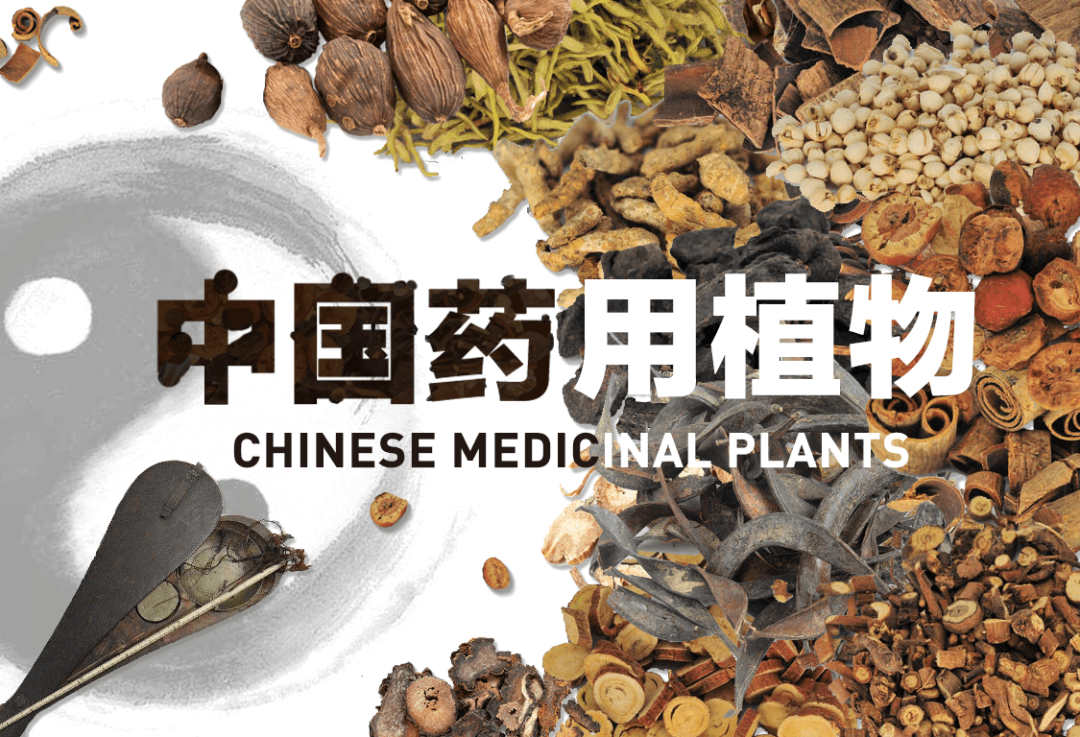
《本草綱目》
《本草綱目》刊印成書是在中國明代萬歷二十四(1596)年,作者是李時珍(1518 - 1593),他在生命晚期還在病榻上親自校勘書稿,最后全部刊印成書他生前未能看到。這是一部對人類生存發展、健康幸福作出突出貢獻的醫藥學巨著,在世界醫藥學領域影響深遠。這部著作是李時珍畢生心血的結晶,也包含著他子孫和學生的辛勤工作。為保證內容翔實可靠,他親自考察,行程萬里,博覽群書,辨疑勘誤,該書總計引用古籍超 800 部,收載藥物 1892 種,同時還有藥物插圖 1000 余幅,藥方 10000 余個,不僅為中國藥物學的發展作出了重大貢獻,而且對世界醫藥學、植物學、動物學、礦物學、化學的發展也產生了深遠的影響,在中國家喻戶曉。出版后還被譯成日、法、德、英、拉丁、俄、朝鮮等 10 余種文字在國外出版,廣泛傳播,被達爾文稱為 “中國古代的百科全書”,2011 年入選《世界記憶名錄》。
本文帶您了解《本草綱目》的作者李時珍,書名《本草綱目》是什么意思?書里寫了什么?又因何而偉大?

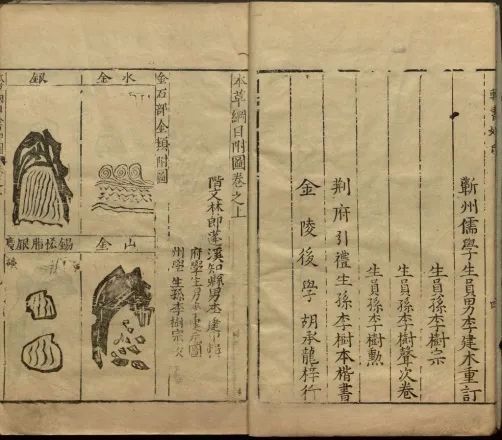
01作者簡介
李時珍,字東璧,晚年自號瀕湖山人,湖北蘄春縣蘄州鎮東長街之瓦屑壩(今博士街)人,明代著名醫藥學家。后為楚王府奉祠正、皇家太醫院判,去世后明朝廷敕封為 “文林郎”。
自 1565 年起,李時珍先后到武當山、廬山、茅山、牛首山及湖廣、安徽、河南、河北等地收集藥物標本和處方,并拜漁人、樵夫、藥工、捕蛇者等為師,記錄上千萬字札記,弄清許多疑難問題,歷經 27 個寒暑,三易其稿,完成了 192 萬字的巨著《本草綱目》,此外對脈學及奇經八脈也有研究,著述有《奇經八脈考》《瀕湖脈學》等多種。

李時珍畫像
02書名為什么叫《本草綱目》?
“本草” --自古以來,人們用來治療疾病的藥物有很多,包括了植物、動物和礦物,其中以植物里的根類、草類最多,在古漢語里,“本” 是 “根” 的意思,所以古人就用 “本草” 二字來代表藥物。
“綱目” --“綱” 的原意指漁網上提網的總繩,“目” 是漁網上的網眼,抓住了總繩,就能控制好網眼,所以古人常用 “綱舉目張” 來形容做事能抓住關鍵、條理分明,并把綱目的概念用到書籍撰寫上,形成了 “綱目體”,成為中國志書編纂的一種傳統形式。具體結構是先設總綱,或稱大類,各綱之下再設細目,目以綱舉,以綱統目,目下再設子目。
所以 “本草綱目” 的字面意思就是以綱目體例撰寫的藥物書籍。王世貞為《本草綱目》寫的序言中說得更明白:“每藥標正名為綱,附釋名為目”。所謂目隨綱舉,因此叫作《本草綱目》。

03《本草綱目》寫了什么?
《本草綱目》共計 52 卷,本質上是以綱目體例撰寫的藥物學大辭典。
第一、二卷為 “序例”,內容主要為中醫理解藥物的性能,使用原則和方法。是以《神農本草經》中的理論內容為基礎,追加不同時代學者及他本人的觀點,再將后世發揮的其他理論加入。
第三、四卷為 “百病主治”,以病名為綱,以辨證用藥為目,把藥物按其性能和主治進行分類,為醫者臨床辨證選藥提供了方便,同時也體現了辨證論治的精神。
第五卷至五十二卷:逐一介紹共計 1892 味藥材。
每味藥材分別記錄如下內容:
【釋名】羅列各種異名,解釋名字的由來
【集解】描述形態、產地、栽培、采集時間與方法
【辯疑】【正誤】糾正前人的錯誤
【修治】如何炮制和保存藥物
【氣味】藥物的性質
【主治】列舉能醫治的主要病癥
【發明】闡明治病機理,記述前人及自己的用藥心得
【附方】介紹怎么用,輯錄以該藥物為主的各種驗方
【附錄】形態上或藥效上相近而卻不能確認的藥物
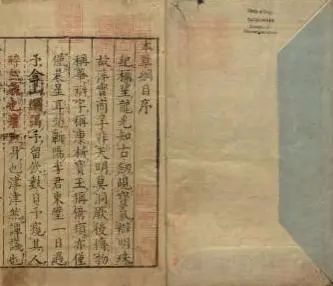
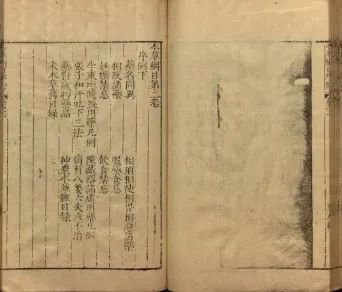
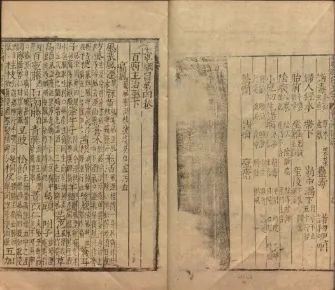

04《本草綱目》因何偉大?
《本草綱目》之前重要的本草學著作:
*《神農本草經》:中國古代本草的核心著作,載藥 365 種。
*《本草經集注》:總結漢朝至魏晉時期本草知識的書籍,載藥 730 種。
*《唐本草》:世界第一部由國家頒布的用藥法典,首次出現藥圖,載藥 884 種。
*《本草拾遺》:唐代一部以不厭詳悉、廣泛收集為特色的書,載藥 1576 種。
*《開寶本草》:宋代官修本草,為我國第一部雕版印刷的本草書籍,載藥 963 種。
*《嘉佑補注本草》:宋代官修本草,載藥 1082 種。
*《圖經本草》:作為《嘉佑補注本草》的補充,匯集各地所產藥圖而成,為我國第一部雕版印刷的藥物圖譜,載藥 635 種,繪圖 933 幅。
*《證類本草》:宋徽宗時期,載藥 1558 種。
在《本草綱目》還未出現時,由北宋民間醫生唐慎微撰寫的《證類本草》已經在中國流行了 500 年。《證類本草》創造性地采用了方藥對照和圖文對照的形式,不僅將宋代官修本草著作進行了合并,并且輯錄了大量宋代以前的重要醫藥著作,被宋朝政府修訂成為了國家級的用藥法典。李時珍稱贊:“使諸家本草及各藥單方,垂之千古,不致淪沒者,皆其功也”。并將其作為《本草綱目》的寫作藍本,也成為《本草綱目》成就偉大需要超越的著作。
偉大的原因1:看清古今,定位未來,廣泛收羅
古代大部分本草著作都傾向于只收錄經典、常用的藥物知識,不收錄偏僻、少用的知識,而李時珍卻認為都應該收錄,因為看問題不應該僅限于當時,還要看過去和未來,現在用的藥物古代并不一定用,未來不一定還繼續用,現在偏僻的藥,未來就也可能成為重要的藥。所以李時珍在《本草綱目》中引用的書籍不僅包括了 276 部古代的本草書籍,還對 591 部非藥物書籍的內容也進行了盡量的核查引用,其中 440 部都是李時珍首次引用,新增加藥物 347 種,字數更是遠超了《證類本草》。

《本草綱目》還不僅是一部藥物書籍,也是一部博物書籍,內有天文學、地理學、史學、礦物學、生物學、化學等內容。為后人的研究提供了豐富的資料,難怪被達爾文稱為 “中國古代的百科全書”。
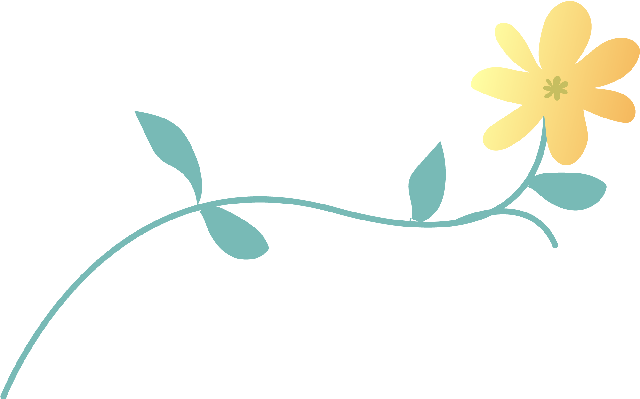
三七是最好的見證
在明朝末期,三七剛剛被人們發現可用于軍人創傷的恢復,按照其他著作的慣例是不會被收錄的,但李時珍按照自己的原則,把三七收錄到了《本草綱目》中。他并不知道在 500 年后的今天,三七已經成為了治療心血管疾病的常用藥物。這充分說明了《本草綱目》在撰寫時廣泛收羅的正確性。
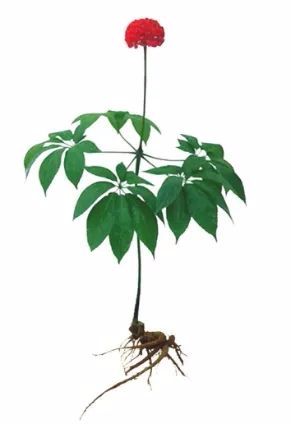
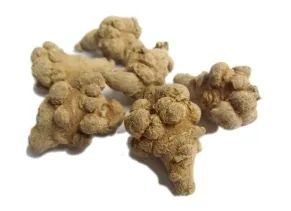
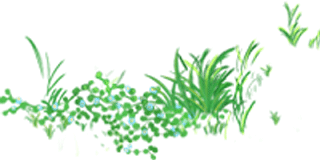
偉大的原因2:敢于說出自己的觀點
《證類本草》嚴格摘錄其他書籍的內容,并按照時間順序排列,卻對內容沒有任何闡述,更沒有自己的觀點。《本草綱目》卻不同,李時珍在書中說出了自己的原則:“復者芟之,闕者輯之,訛者繩之”。意思就是要將重復的刪去,缺少的補充,錯誤的改正。敢于把自己經過分析得到的觀點寫進去,還介紹了很多自己及父親治病用藥的經驗。
挑戰權威人士
東晉有名的道家學派高人葛洪,在《抱樸子》中說吃了水銀可以成仙,把蜘蛛和其他幾種藥一起吃了,人就能站在水上不會掉下去。李時珍敢于說出這些內容“不足信”。
不迷信經典
《神農本草經》上將澤瀉列為上品,認為長期吃可以讓身體輕,能在水上走。陶弘景、蘇頌都認同,但李時珍認為 “安有此神功耶?其謬可知”。
狗脊是一種具有鎮痛、利尿及強壯功能的蕨類藥用植物,古人往往分不清與菝葜、萆薢的來源。李時珍從植物特征分析,認為狗脊 “似大葉蕨,比貫眾葉有齒”,與陶弘景所說莖上帶刺,葉圓形的百合科植物不同。
偉大的原因3:創新分類方法,解決難題
難題--藥物太多,前人的分類方法存在不足,難以參照。
古代大部分本草書籍都是混合使用三品分類法、自然屬性分類法和功效分類法。《證類本草》就是這樣,把藥物按照來源屬性分成了 10 部后,由于草類太多,又把草類分為上、中、下三類。對于最末級的藥物的排序,主要是按照醫生的使用習慣,用得多的排到前面。然而,由于劃分的類別較少,難以概括所有的同類藥物,導致很多歸類不正確,比如雨水和灶心土等被歸到了玉石類,蛇、龜等爬行動物被歸入了蟲魚類。并且,過去這些方法不管怎么組合,相鄰兩個藥物之間都沒有聯系。
三品分類法:最早見于《神農本草經》,把藥物按照有毒與否,能否久服,分為上、中、下三品。上品,多為補養藥,可以長期吃;中品多為驅邪治病,兼有補養作用,有的有毒,有的無毒,斟酌其宜;下品多屬攻邪治病之藥,毒性較大,多用于急癥,不可久服。
自然屬性分類法:是按照藥物來源屬性進行分類,最早見于魏晉時期的《吳普本草》,把藥物分為六類。發展至《證類本草》中,人們已總結出了十類自然屬性的藥物,包括玉石、草、木、人、獸、禽、蟲魚、果、米谷、菜。這顯然在藥物越來越多時,更有利于查找。
功效分類法:是按照藥物主要治療什么病癥進行分類。
《本草綱目》解決難題的辦法:
--物以類聚、目隨綱舉、析族區類
將 1892 種藥物歸入了 16 部 60 類中,分類遠多于《證類本草》中的 10 部 30 類。比如數量較多的草部,分為了山草、芳草、濕草、毒草等 10 類,人們容易從類別名稱就可以大致了解藥物的生長特性,比如芳草就是指具有芳香氣味的本草。
除了更多的分類,順序的變化更是創舉,從無機物到有機物,從植物到動物,從低等動物最終到高等動物 “人” ,這一順序和近現代的生物分類方法不謀而合。
水、火、土、金石——無機物
草、谷、菜、果、木——植物
蟲、鱗、介、禽、獸、人——動物
在最末級的藥物排序處理上,李時珍開創性的提出了 “析族區類” 的分類原則,按照他認為具有相似屬性的物種放到一起,比如將菊花、艾葉和青蒿排列在相近的位置,將同樣會流出汁液的大戟、澤漆、甘遂和續隨子排到一起,經過現代植物分類學證實,這些都是屬于親緣關系相近的植物。這一創舉不僅為《本草綱目》內容的查找提供了方便,其前衛的自然分類方法,比西方植物學家林奈的自然分類法早出了 200 余年,對后世的科學研究產生了深遠的影響。
偉大的原因4:推動了其他學科的發展
植物學研究:《本草綱目》記載了 1000 余種植物,不僅收集了前人的記載,還記錄采集標本,對植物的產地、生境、生長發育特征、栽培、采收的方法等內容,為后人植物學研究提供了豐富的資料。
動物學研究:《本草綱目》記載了 400 余種動物,描述了許多動物的形態、生理特征、繁殖情況及病癥等,對我國乃至世界的動物學研究做出了巨大貢獻。
礦物學:《本草綱目》記載礦物類藥物 100 余種,記載了這些藥物的產地、種類、特性、理化性質、開采、冶煉提煉方法、性味、功效等。并且還記載了重要金屬礦產的分布地域以及找礦的方法,為礦物學研究提供了寶貴的資料。
當然除了在以上自然科學界的貢獻,如同前面介紹的,在化學、物理學等方面也是貢獻突出。
文化貢獻:《本草綱目》說明藥物產地、性味、主治的特點,經常引用名家詩文,記載了我國古代詠藥詩的文化特色。另外,書中還記載了大量民俗、宗教等文化內容。為后人研究古代文化提供了豐富的資料。
李時珍以《本草綱目》這部巨著為人類做出了偉大的貢獻,深受后世尊敬,被后人稱作 “醫中之圣”。人們對《本草綱目》的研究至今還在進行。
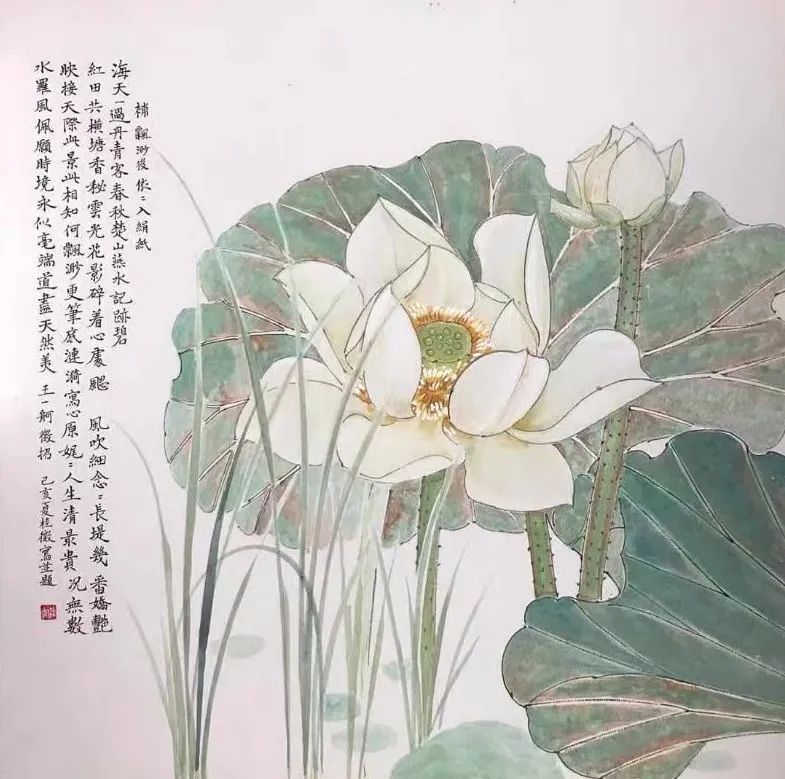
荷花 Nelumbo nucifera
Compendium of Materia Medica
Compendium of Materia Medica was published in the 24th year of Wanli (1596) in the Ming Dynasty in China. The author is Li Shizhen (1518-1593). He was still revising the manuscripts himself with illness in his later days. It seemed that he could not see it during his lifetime. By the end, it was all published as a series book after his life. The book was a medicinal masterpiece that has made outstanding contributions to human survival and development, health and happiness. It had far-reaching influence in the field of word medicine. This book was the culmination of Li Shizhen's life long hard working, and also the knowledge of his descendants and students. In order to ensure that the content was accurate and reliable, he inspected personally, traveled thousands of miles, read abundant books, discerned and corrected errors, and made reference of more than 800 titles of ancient books. The book recorded 1892 kinds of medicines, with more than 1,000 illustrations, and more than 10,000 prescriptions. It not only made a significant contribution to the development of Chinese pharmacology, but also had a profound influence on the development of world medicine, botany, zoology, mineralogy and chemistry. It was well-known in China and abroad after its publication, and was translated into more than ten languages including Latin, Japanese, French, German, Italy, English, Russian, Korean, etc. The book was published abroad and disseminated widely. It was known as Flora Sinensis and was called ‘Encyclopedia of Ancient China’ by Darwin. In 2011, it was selected into the Memory of the World Register.
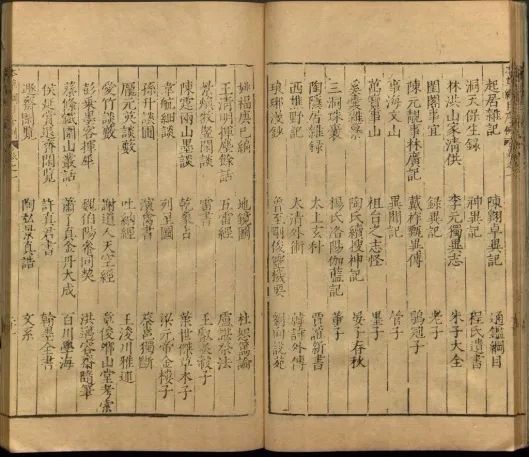
This article will take you to know Li Shizhen, the author of Compendium of Materia Medica. What did the title of Compendium of Materia Medica mean? What was written in the book? Why was it great?
01About the author
Li Shizhen, style name Dongbi, literary name Linhushanren in his later years. He lived in Waxieba (now Doctor Street) in Dongchang Street, Qizhou Town, Qichun County, Hubei Province. He was a famous medical scientist in Ming Dynasty. Later, he was honored as the head of the temple of Chu Wang Fu and the judge of the Royal Hospital. After his death, he was named ‘Wen Lin Lang’ by the Ming court.
Since 1565, Li Shizhen had been to Wudang Mountain, Lushan Mountain, Maoshan Mountain, Niushou Mountain and Huguang, Anhui, Henan, Hebei and other places to collect drug specimens and prescriptions. He learned from fishermen, woodcutters, pharmacists, snake catchers, etc. He recorded tens of millions of words in notes, clarified many difficult questions. After 27 years compilation, he revised the manuscript three times and then completedCompendium of Materia Medica with 1.92 million words. In addition, he had also studied pulse theory and Eight Extraordinary Meridians. He had written many books such as the The Study of Eight Extraordinary Meridians and Linghu Sphygmology.

草珊瑚 Sarcandra glabra
02Why was the book called
Compendiumof Materia Medica?
Bencao - Since ancient times, people have used many drugs to treat diseases, including plants, animals, and minerals. Among them, the roots and grasses are the most common used plant materials. In ancient Chinese, ‘Ben’ means ‘Root’. So the ancients used the word ‘Bencao’ to represent herb medicine (materia medica).
Gangmu - The original meaning of ‘Gang’ refers to the main rope of the fishing net. ‘Mu’ is the mesh on the fishing net. The mesh can be controlled well by grasping the main rope. Therefore, the ancients often used ‘Gang Ju Mu Zhang’ to describe the ability of grasping the key points and being organized. The concept of the outline was applied to the writing of books, forming the ‘Outline Style’, which has become a traditional form of Chinese chronicle compilation. The specific structure is to first set up a general outline, or general category, and then set up detailed items under each outline, the items are lifted by the outline, the items are controlled by the outline, and then sub-items are set up under the items.
Therefore, the literal meaning of ‘Compendium of Materia Medica’ is a drug book written in a general style. Wang Shizhen’s preface for Compendium of Materia Medica made it clearer: The correct name of each drug label was the ‘Gang’, and the appendix was called the ‘Mu’. Since item always followed the outline, it was called Bencao Gangmu in Chinese,Compendium of Materia Medica in English.
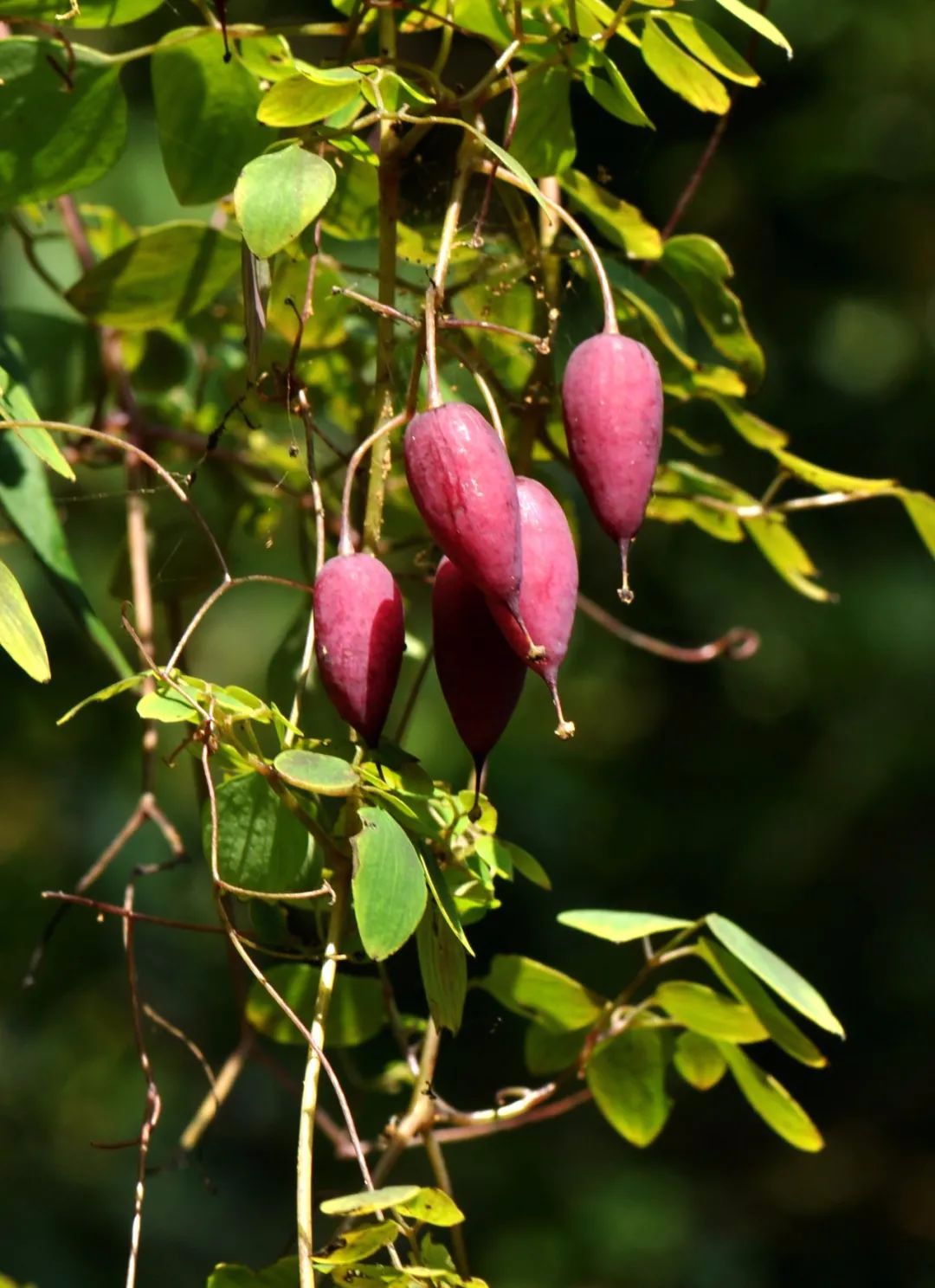
紫金龍 Dactylicapnos scandens
03What is written in
Compendium of Materia Medica?
Compendium of Materia Medica consisted of 52 volumes, which was essentially a dictionary of pharmacology written in the style of the outline.
The first and second volumes were ‘Prefaces’. The content was mainly about understandings of the properties of medicines, principles and methods of using medicines by Chinese medicine practitioners. It was based on the theoretical content of Shennong's Classic of Material Medica, adding the views of scholars from different eras and his own, and other theories developed by later generations.
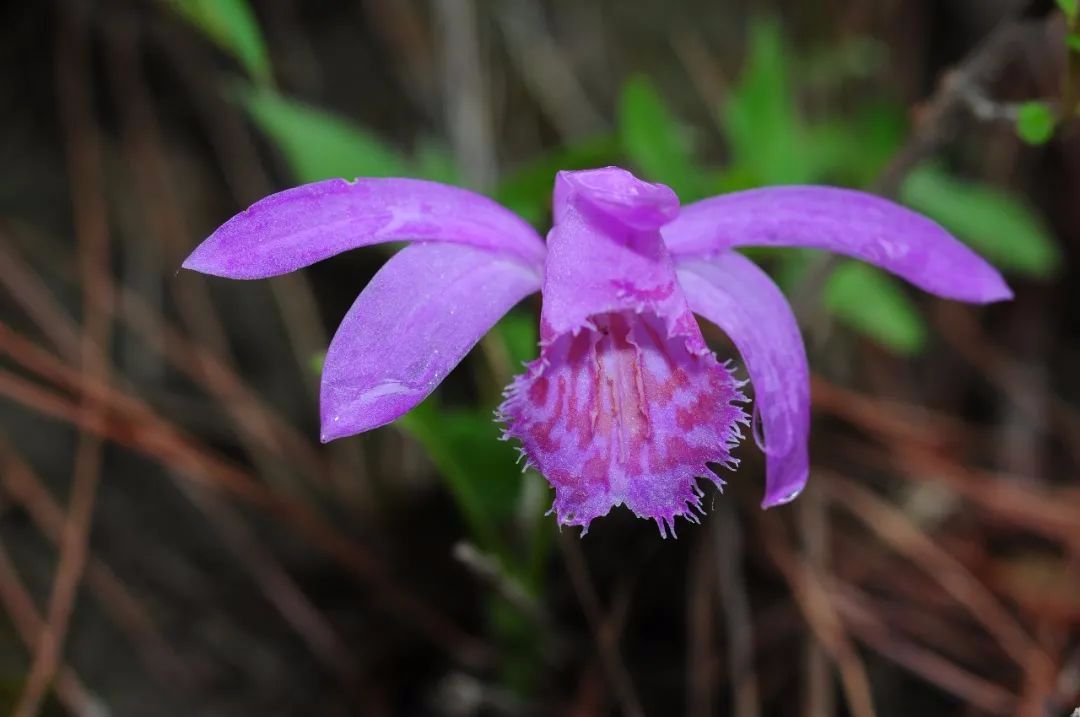
獨蒜蘭 Pleione bulbocodioides
The third and fourth volumes were ‘Indications for all diseases’, with the name of the disease as the outline, and dialectical medicine using as the item. The medicines were classified according to their properties and indications, which provided convenience for doctors in choosing drugs based on clinical syndromes. It also reflected the spirit of treatment according to syndrome differentiation.
Volume 5 to Volume 52: Introduced a total of 1892 medicinal materials one by one.
04Why is Compendium of Materia Medicagreat?
Reasons for Great 1:
Being aware of the past and the present
clearly,locating the future and collecting
extensively
Most of the ancient Chinese herbal works tended to include only knowledge of classic and common medicine, not remote and rare ones. However, Li Shizhen believed that all of them should be included, and should not be limited to the time, but also the past and the future. The medicine used today was not necessarily used in ancient times, and may might not be used in the future. The medicine that was remote and rare now might become an important medicine in the future. Therefore, Li Shizhen not only made reference of 276 ancient herbal books, but also checked and quoted the contents of 591 non-medicinal books as much as possible. Among them, 440 books were cited for the first time by Li Shizhen. There were 347 types of new drug added, and the number of words far exceeded that of Classified Materia Medica.
Compendium of Materia Medica was not only a medicinal book, but also a natural history book, containing knowledge of astronomy, geography, history, mineralogy, biology, chemistry, etc. It provided abundant information for generations to research. No wonder Darwin called it the ‘Encyclopedia of Ancient China’.
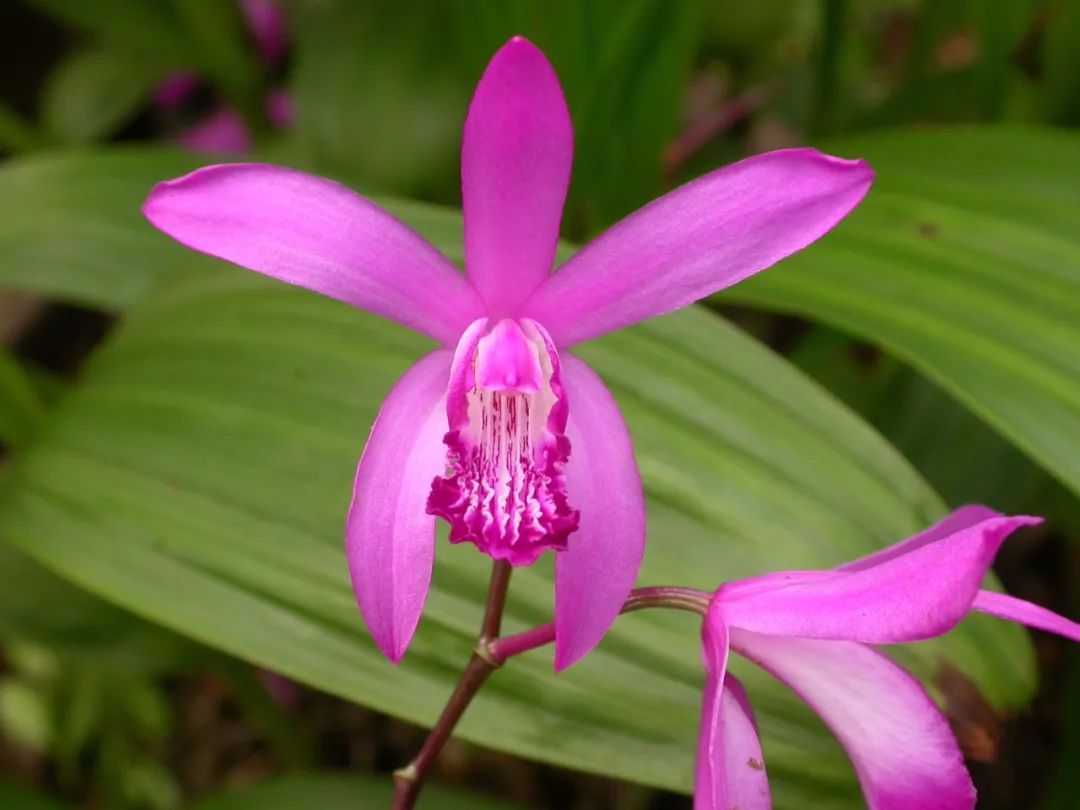
白及 Bletilla striat
Reasons for Great 2:
Daring to speak his own opinions
Classified Materia Medica strictly extracted the content of other books and arranged them in chronological order, but did not elaborate on the contents and without the opinions of the author. Compendium of Materia Medica was different. Li Shizhen stated his principles clearly in the book: "The reverted will confuse it, the fault will compile it, and the wrong will be brought to justice." It means deleting duplicates, supplying missing, and correcting mistakes. He dared to write the opinions obtained through analysis, and introduced a lot of his and his father's experience in treating diseases and using medicine.
Reasons for Great 3:
Innovating classification methods and solving difficult problems
The problem there were too many drugs, and the previous classification methods were insufficient and difficult to refer to.
Most ancient herbal books used a mixture of classifications, the three-grade classification, the natural attribute classification and the efficacy classification. Classified Materia Medica was like this. After dividing the medicine into 10 parts according to the source attribute, the herbs were divided into three categories (upper, middle and lower) because there were too many kinds of herbs. The order of the last-level drugs was mainly based on the doctor's usage habits and the often used drugs were ranked first. However, due to the small number of categories, it was difficult to summarize all similar drugs, resulting in many incorrect classifications. For example, rainwater and stove heart soil were classified as jade, and reptiles such as snakes and turtles were classified as insects and fish. Moreover, in the past, no matter how these methods were combined, there was no connection between two adjacent drugs.

流蘇石斛 Dendrobium fimbriatum
Methods of Compendium of Materia Medica to solve difficult problems-gathering things by category, listing according to the outline, analysing of ethnicity.
1892 kinds of drugs were classified into 60 types of 16 categories, which were far more than the 30 types of 10 categories in Classified Materia Medica. For example, grass was divided into 10 categories such as mountain grass, fragrant grass, wet grass, and poisonous grass. People could easily understand the growth characteristics of medicines from the category names. For example, fragrant grass refered to the herbal medicine with aromatic smell.
In addition to more classification categories, the change of order was a pioneering work. From inorganic to organic, plant to animal and the natural evolution process from lower animal to higher animal and human, they all coincided with modern biological evolution theory.
Water, fire, earth, gold and stone-inorganic matter
Grass, grain, vegetable, fruit, wood-plants
Insects, scales, mediums, birds, beasts, humans-animals
In the lowest grade, Li Shizhen pioneered the classification principle of ‘analysis of ethnic groups’. He grouped them together according to what he believed to have similar attributes, such as arranging chrysanthemum, mugwort and Artemisia annua in close position and also putting together euphorbia, wartwort, lathyrism and kansui because they shed juice. Modern plant taxonomy had confirmed that these are all closely related plants. This pioneering work provided convenience for searching the contents of Compendium of Materia Medica. Its avant-garde natural classification method was more than 200 years earlier than the natural classification method of the western botanist Linnaeus, and had a huge impact on the scientific research of later generations.
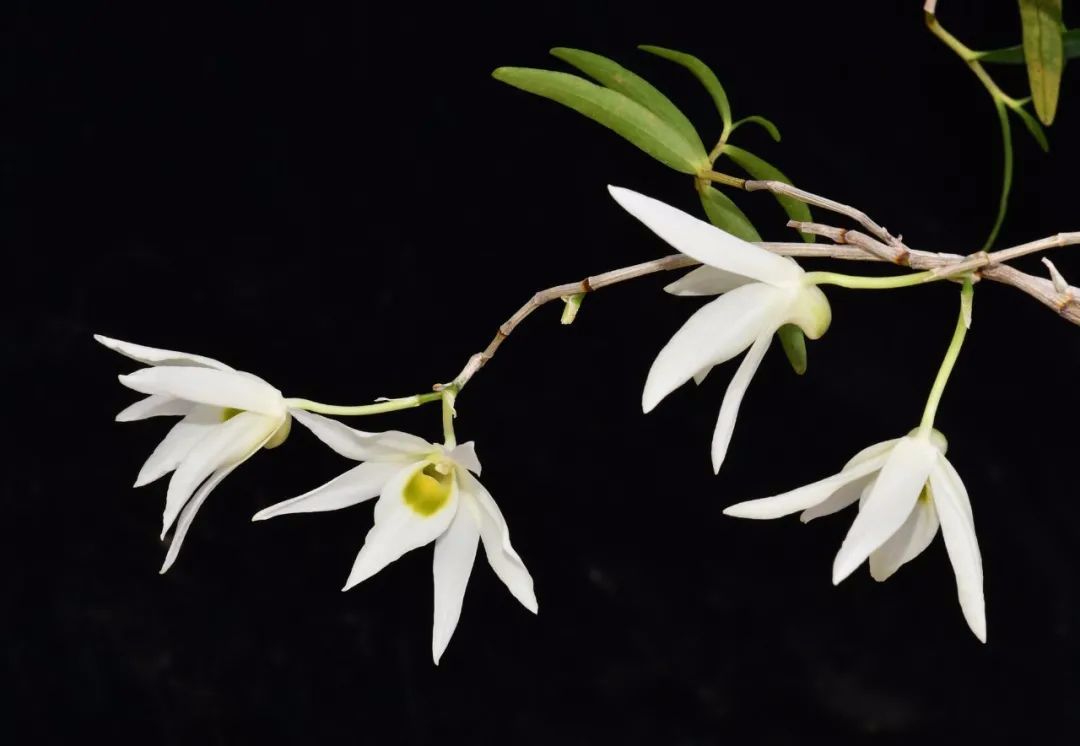
廣東石斛 Dendrobium wilsonii
Reasons for Great 4:
Promoting the development of other disciplines
Botanical research: Compendium of Materia Medica recorded more than 1,000 kinds of plants. It not only collected records from predecessors, but also recorded specimens collected, including the plant's origin, habitat, growth characteristics, cultivation and harvesting methods, etc. It provided abundant information for future generations of botanical research.
Zoological research: The Compendium of Materia Medica recorded more than 400 animals, describing the morphology, physiological characteristics, reproductive conditions and diseases of many animals. It has made great contributions to zoology research in our country and the world.
Mineralogy:Compendium of Materia Medica recorded more than one hundred kinds of mineral drugs, including the origin, types, characteristics, physical and chemical properties, mining, smelting and refining methods, properties, flavors, and efficacy of these drugs. It also recorded the distribution area of important metal minerals and the methods of prospecting, which provided valuable data for mineralogical research.
Of course, in addition to the contributions to the natural science mentioned above, as mentioned earlier, there were also outstanding contributions in chemistry and physics.
Cultural contribution: Compendium of Materia Medica described the characteristics of the origin, taste and indications of the medicine. It often quoted famous poems and recorded the cultural characteristics of ancient medicine poems in our country. In addition, the book also recorded a lot of cultural contents such as folk customs and religion. It provided abundant materials for future generations to study ancient culture.
Li Shizhen made a great contribution to mankind with the masterpiece Compendium of Materia Medica. He was respected by later generations and was called ‘the saint of medicine’. The research on Compendium of Materia Medica is still going on.
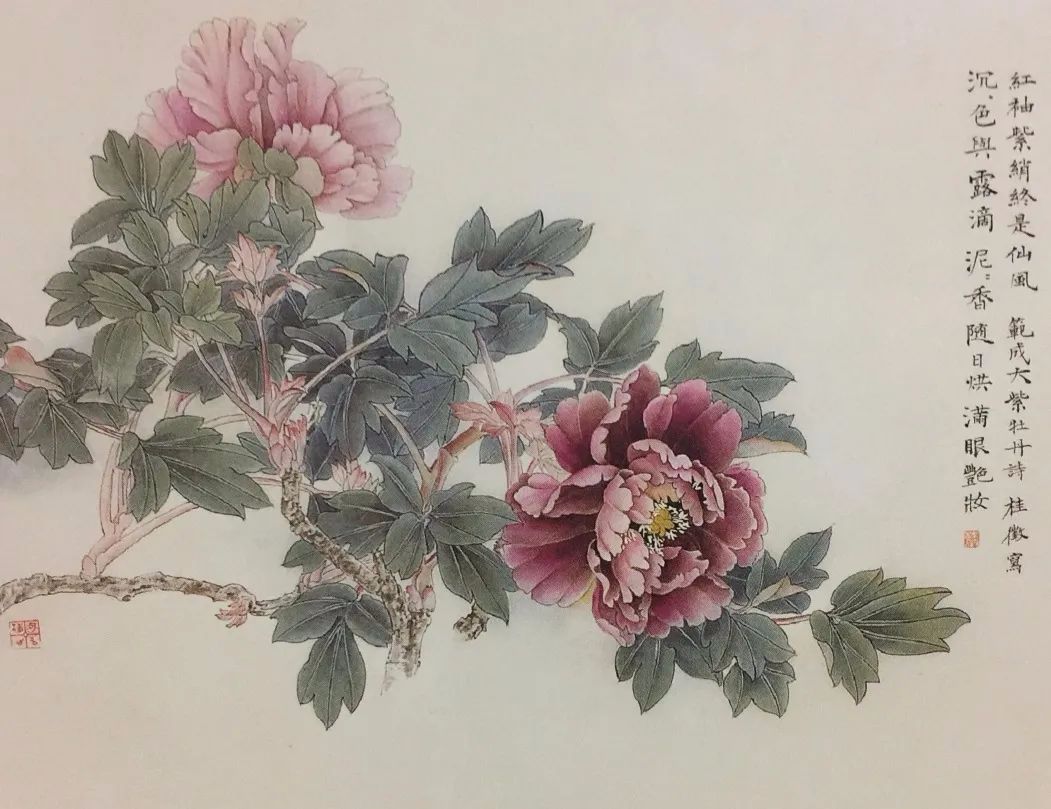
牡丹 Paeonia suffruticosa

稿 源:王秋玲
專家顧問:張本剛 | 張憲春 | 宋經元 | 齊耀東
文化顧問:張桂徵 | 張振華
翻 譯:王秋玲 | 李 鉞
攝 影:黃云峰 | 劉 演
責任編輯:李姍姍 | 楚雅南

| 版權聲明: 1.依據《服務條款》,本網頁發布的原創作品,版權歸發布者(即注冊用戶)所有;本網頁發布的轉載作品,由發布者按照互聯網精神進行分享,遵守相關法律法規,無商業獲利行為,無版權糾紛。 2.本網頁是第三方信息存儲空間,阿酷公司是網絡服務提供者,服務對象為注冊用戶。該項服務免費,阿酷公司不向注冊用戶收取任何費用。 名稱:阿酷(北京)科技發展有限公司 聯系人:李女士,QQ468780427 網絡地址:www.arkoo.com 3.本網頁參與各方的所有行為,完全遵守《信息網絡傳播權保護條例》。如有侵權行為,請權利人通知阿酷公司,阿酷公司將根據本條例第二十二條規定刪除侵權作品。 |
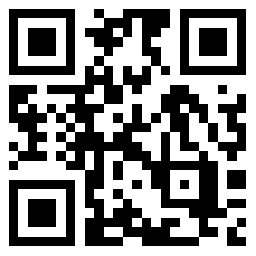 m.quanpro.cn
m.quanpro.cn